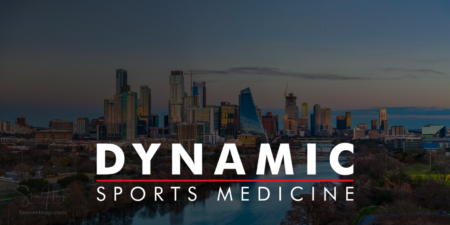As one of the most common knee injuries, MCL and meniscus tears affect more than 1 million people in the United States every year. Most often caused by abrupt twisting or falling, such as during a sports event, these injuries can range from a simple sprain to a complete tear and can be both painful and debilitating. The good news is that understanding these injuries, and how to treat them, can make it easier to get the correct restorative approach and get back to your regular fitness levels.
What are MCL and meniscus injuries?

Known as the medial collateral ligament, the MCL is a strong band of tissue that runs along the inner side of the knee, from the shin to the thigh. It secures the thigh bone in place and offers stability to your knee.
The meniscus is a c-shaped piece of cartilage that sits between the thigh and shin bones. You have one meniscus on the inside of your knee and one on the outside. They act as shock absorbers, protecting the lower part of the leg from the weight of the upper body.
Injuries to both of these parts of your knee can be caused by the abrupt, twisting or falling motions that often accompany sports (Though you can injure them in other ways, such as by slipping on ice, lifting something too heavy, receiving a direct blow to your knee, or by degeneration of the ligament and meniscus over time).
Injuries can vary in severity. Usually, MCL and meniscus tears are put into one of three grades. Grade 1 occurs when 10 percent or fewer of the fibers are torn. Grade 2 occurs when the outer part of the ligament or meniscus is torn. A Grade 3 tear is most severe and occurs when the tear extends into the interior part of the knee, causing significant instability and making it difficult to walk.
What are the symptoms of MCL and meniscus injuries?

Typically, the symptoms of this type of injury occur almost instantaneously and can immediately interfere with your ability to stand, walk, and complete your regular activities (Including sports activities). These symptoms may include any of the following:
- A popping sensations
- Knee swelling or stiffness
- Knee instability when standing
- Difficulty straightening the knee
- Locked knee
- Pain
- Tenderness
How are MCL and meniscus injuries treated?

Because MCL and meniscus injuries can significantly impact your ability to do everything from play sports to even bear weight on your leg, you need to have them diagnosed and treated as soon as possible. There are three primary methods of addressing these types of injuries: Rest, surgery and physical therapy.
Rest
Rest alone is most often used for Grade 1 MCL injuries and mild meniscus tears. In this case, you may be asked to engage in the RICE method (Rest, Ice, Compression, Elevation). You will probably wear a bandage on your knee, use crutches, and take pain relievers as recommended by your provider. Usually, Grade 1 MCL tears, and some more severe injuries, resolve within 3 weeks with this approach.
Physical Therapy

More often, however, both MCL tears and meniscus tears are treated with physical therapy in addition to rest and medication. The goal of physical therapy is to strengthen the muscles throughout your leg and around your knee in particular in order to create more stability and strength in the injured area. This treatment approach will also focus on maintaining your knee’s range of motion so you can return to your normal activities more quickly. Here is a look at some of the approaches your PT may take to address your knee injury:
- Manual therapy and massage
- Electrical stimulation
- In-session and at-home exercises to strengthen your knee and leg
- Ultrasound
- Taping
- Motion exercises
- Balance training
- Preventive treatment for future strength and health
Surgery
For severe tears of your MCL or meniscus, you may need to undergo surgery. MCL surgery most often occurs when you sustain additional damage to your knee in addition to the MCL tear. Whether or not you choose this approach will depend upon a number of factors, including the following:
- Position and severity of the tear
- Age
- Activity level
- Other injuries
- Symptoms
Meniscus surgery usually consists of a knee arthroscopy. During this surgery, a small camera and light are inserted into your knee to observe the injury. Based on their findings, the surgeon will then insert other surgical tools to either sew the torn meniscus together or trim it. You will often return to daily activities within 6-8 weeks, and should expect to undergo physical therapy while you recover.
MCL surgery is similar to meniscus surgery in that it uses the arthroscopic approach. However, your options for treatment consist of reattaching the ligament or rebuilding it using grafts from your patellar or hamstring tendon or from a donor tendon.
Once surgery is complete, recovery will take about 6 weeks and involve physical therapy. The therapy for meniscus and MCL repairs is similar to the PT offered without surgery: Techniques and exercises designed to restore stability, strength, and range of motion will be used.
Whether you injure your MCL or your meniscus, chances are that physical therapy will be required to help you heal. As the leaders in sports chiropractic care, Dynamic Sports Medicine exists to deliver the highest level of care for your MCL, meniscus, and other sports injuries. Contact us today to find out how we can help you!





